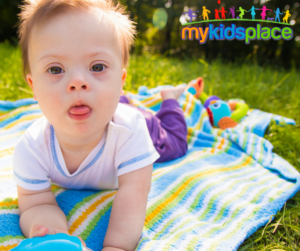
I’ve worked with many families over the years to help children with feeding difficulties. It’s a very complex area of specialization for therapists. Picky eaters can be very frustrating for both children and families. In some cases, it can be dangerous and definitely a concern that requires a professional. By working together with your trained therapist, you can overcome the challenge of having picky eaters and ensure they can safely eat a variety of foods to support healthy development.
To begin, I’d like to clarify how I define eating. I view eating as the conscious and unconscious actions that take place once food is delivered to our mouths. I view food delivery as the act of feeding, whether that’s a child holding their bottle or cup or using their fingers or a utensil to place food in their mouths.
Before we even begin to eat, we use our visual and olfactory (smell) systems to “size up” our food. This may influence our perception of the textural and flavor expectations. It can bring up memories of previous experiences and evoke emotions about what’s in front of us. For some children, the emotional response to new foods is fear and response can be negative behaviors such as tantrums or actions such as throwing the food.
But why does this happen for some families?
There is an incredibly complex orchestration of activities that leads to successful eating. It begins involving our senses such as touch, taste, smell, temperature and body awareness as we use our lips, tongue, jaw and teeth (if a child has them yet!) to ensure our food is chewed, mashed or dissolved to consistency that’s safe to swallow. The abilities of your child determine how confident they are when presented with a new food, or reinforce negative feelings associated with foods and mealtimes. Responses ranging from refusals to gagging or vomiting can occur and it’s important to correctly determine the underlying causes.
If you’ve ever been told, “they won’t starve, they’ll eat when they’re hungry” or been afraid that your child is not eating a healthy variety of foods, I’d love to work with you. My perspective is that a confident eater will be a successful eater and I would be very happy to help you and your family overcome this hurdle with our occupational therapy service.
** IMPORTANT! PLEASE READ: Once food is delivered to the pharynx, the act of swallowing should be reflexive and automatic. Dysfunction in this automatic phase of eating can be critical to one’s health as we should be able to safely deliver food to the stomach without it entering our airway.
Dysphagia is a broad term for difficulties with reflexive swallowing and there can be a variety of underlying reasons. The term for when food enters our airway is aspiration. Aspiration can lead to pneumonia and significant medical complications. I can’t underscore the significance or seriousness of aspiration enough.
Treatment of dysphagia to avoid aspiration requires a clinician with advanced practice certification and is not the subject of this blog, as I do not hold this practice certification.


